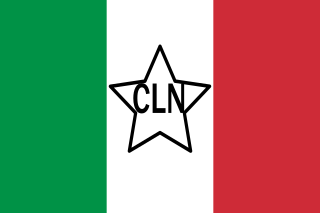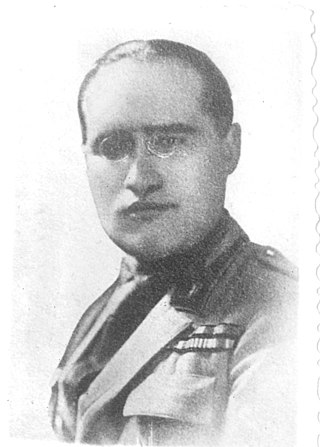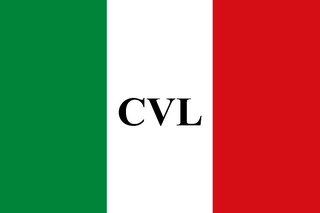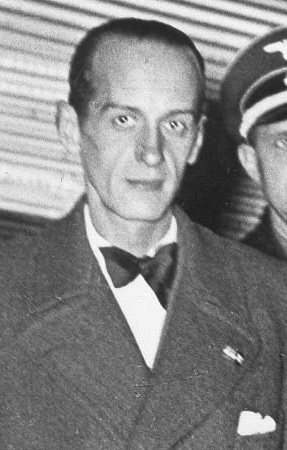
The foreign relations of the Italian Republic are the Italian government's external relations with the outside world. Located in Europe, Italy has been considered a major Western power since its unification in 1860. Its main allies are the NATO countries and the EU states, two entities of which Italy is a founding member. Italy was admitted to the United Nations in 1955, and it is a member and a strong supporter of a wide number of international organisations, such as the Organisation for Economic Co-operation and Development (OECD), the General Agreement on Tariffs and Trade and World Trade Organization, the Organization for Security and Co-operation in Europe (OSCE), the Council of Europe, and the Central European Initiative.

The Italian Social Republic, known prior to December 1943 as the National Republican State of Italy, but more popularly known as the Republic of Salò, was a Nazi-German puppet state with limited diplomatic recognition that was created during the latter part of World War II. It existed from the beginning of the German occupation of Italy in September 1943 until the surrender of German troops in Italy in May 1945. The German occupation triggered widespread national resistance against it and the Italian Social Republic, leading to the Italian Civil War.

The Italian Resistance consisted of all the Italian resistance groups who fought the occupying forces of Nazi Germany and the fascist collaborationists of the Italian Social Republic during the Second World War in Italy from 1943 to 1945. As a diverse anti-fascist and anti-nazist movement and organisation, the Resistenza opposed Nazi Germany and its Fascist puppet state regime, the Italian Social Republic, which the Germans created following the Nazi German invasion and military occupation of Italy by the Wehrmacht and the Waffen-SS from 8 September 1943 until 25 April 1945.

The Allied Military Government of Occupied Territories was the form of military rule administered by Allied forces during and after World War II within European territories they occupied.

The Armistice of Cassibile was an armistice that was signed on 3 September 1943 between Italy and the US and UK during World War II. It was made public five days later.

The Italian Civil War was a civil war in the Kingdom of Italy fought during the Italian campaign of World War II between Italian fascists and Italian partisans and, to a lesser extent, the Italian Co-belligerent Army.
The Italian guerrilla war in Ethiopia was a conflict fought from the summer of 1941 to the autumn of 1943 by remnants of Italian troops in Ethiopia and Somalia, in a short-lived attempt to re-establish Italian East Africa. The guerrilla campaign was fought following the Italian defeat in the East African campaign of World War II, while the war was still raging in Northern Africa and Europe.

The Four Days of Naples was an uprising in Naples, Italy, against Nazi German occupation forces from September 27 to September 30, 1943, immediately prior to the arrival of Allied forces in Naples on October 1 during World War II.

Temistocle Testa was an Italian Fascist activist and politician.
The Badoglio Proclamation was a speech read on Ente Italiano per le Audizioni Radiofoniche (EIAR) at 19:42 on 8 September 1943 by Marshal Pietro Badoglio, Italian head of government, announcing that the Armistice of Cassibile between Italy and the Allies signed on the 3rd of September had come into force. It followed a speech on Radio Algiers by U.S. General Dwight D. Eisenhower at 18:30 also announcing the armistice.
The Acqui Award of History is an Italian prize. The prize was founded in 1968 for remembering the victims of the Acqui Military Division who died in Cefalonia fighting against the Nazis. The jury is composed of seven members: six full professors of history and a group of sixty (60) ordinary readers who have just one representative in the jury. The Acqui Award Prize is divided into three sections: history, popular history, and historical novels. A special prize entitled “Witness to the Times,” given to individual personalities known for their cultural contributions and who have distinguished themselves in describing historical events and contemporary society, may also be conferred. Beginning in 2003 special recognition for work in multimedia and iconography--”History through Images”—was instituted.

Giuseppe Cobolli Gigli was an Italian engineer and politician. From 1935 to 1939, he was member of Benito Mussolini's Italian fascist government as minister of public works.
The Italian partisan brigades were armed formations involved in the Italian resistance during the World War II.

The Brigate Garibaldi or Garibaldi Brigades were partisan units aligned with the Italian Communist Party active in the armed resistance against both German and Italian fascist forces during World War II.

During World War II, Tuscany, the Italian port city of Livorno was repeatedly bombed by the Allied air forces, suffering about a hundred raids altogether, which resulted in it being among the most war-damaged cities in Italy.

Giuseppe Cordero Lanza di Montezemolo was an Italian soldier and Italian Resistance member.

The Corpo Volontari della Libertà was the unified command structure of the Italian Resistance during the Second World War, recognized both by the Allies and the "southern" Italian governments.

Umberto Albini was an Italian Fascist politician and civil servant, who served as State Undersecretary for the Interior of the Kingdom of Italy from February to July 1943 and as prefect in several Italian cities, including Genoa, Naples and Palermo.

Oreste Bonomi was an Italian Fascist politician, who served as the last Minister for Exchanges and Currencies of the Mussolini Cabinet from February to July 1943.

The Ministry of Occupied Italy was the government body of the Kingdom of Italy responsible for affairs in portions of Italy under Axis occupation during World War II. The ministry existed from December 1944 to July 1945.



















